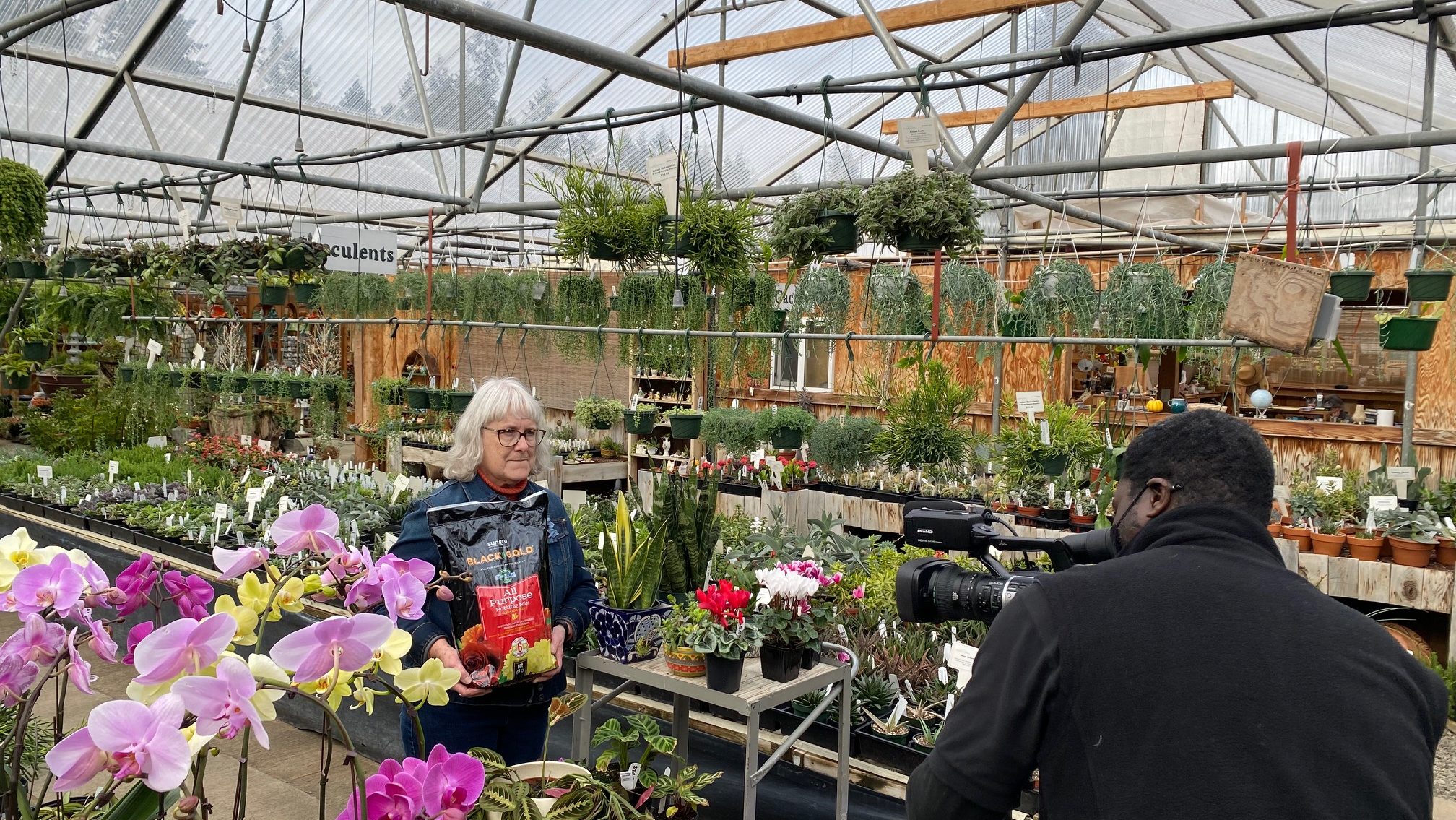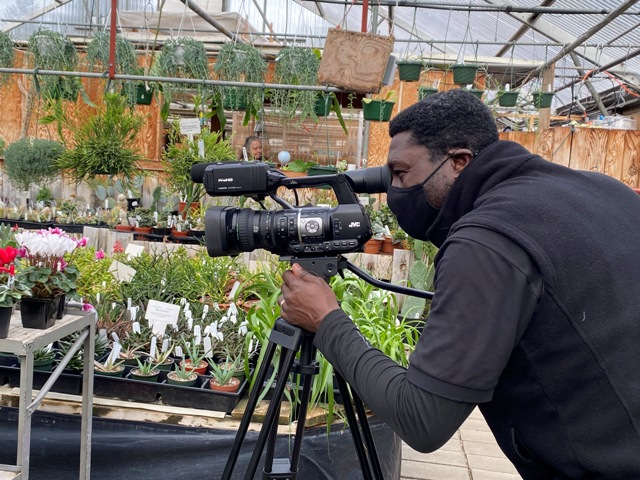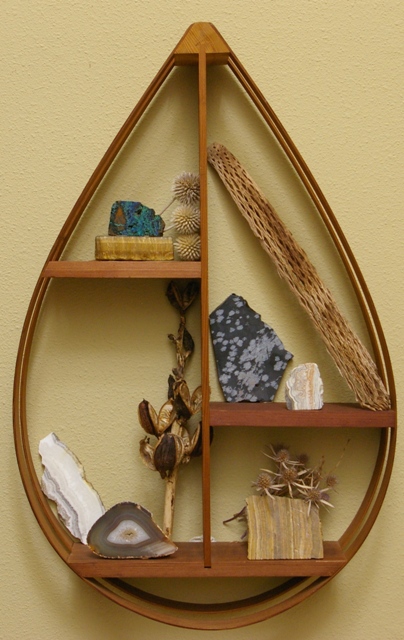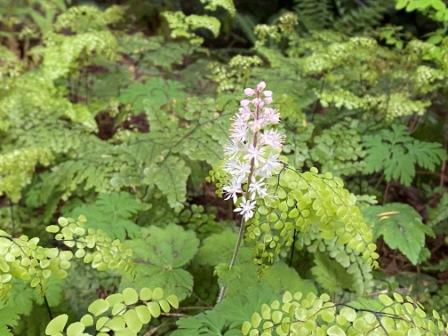
4′ x 8′ raised beds with 4 galvanized pipe hoops, cross bar and floating row cover for crop protection
This update includes links to the new Planted garden video segment on “Using Floating Row Cover”–my favorite tool for vegetable pest prevention.
Vimeo: https://vimeo.com/543857631
YouTube: https://www.youtube.com/watch?v=5YzDTJc_J5I
In my edible garden, floating row cover (also known by brand names like Reemay or Agribon) is my go-to pest control method. It’s helpful to control a variety of pests from birds, to carrot rust fly, imported cabbage moth, and so on. The term I should use rather than control, is deter. Covering my vegetables and herbs with the very thin, spun polyester fabric physically blocks the pests from getting to the plants to eat them–it excludes them so that I don’t have to resort to control methods. It’s a preventative technique to deter the establishment of pests.
Other benefits:
• Protects tender plants from wind, driving rain, the weight of snow, and intense sun;
• Provides heat retention and elevated humidity;
• Allows in light, rain, and air flow.
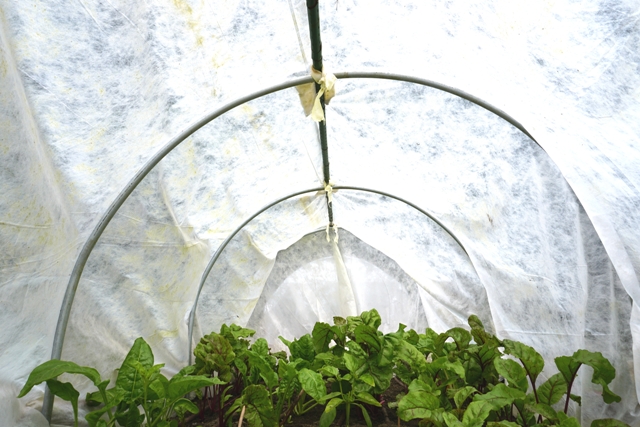
Under the row cover: cross support tied to hoops for stability. Happy chard, beets, basil!
I use removable galvanized hoops as frames for draping and securing floating row cover. A friend who has a handy metal bending tool arched the 10′ metal pipes to be 4′ wide at the base, which matches the inside diameter of my raised beds. By sinking the cut ends of 4 hoops into the soil along the inside walls at even distances and held stable across the top by a cross bar (an 8′ fiberglass garden stake), the frame is secured. You can make hoops from pvc pipe, if you prefer.
Once the hoops are in, I drape the row cover over, allowing enough extra fabric around all the sides to pool on the soil level. Then anything heavy can be used to secure the fabric to the soil just inside the walls, I have used bricks, rocks, a length of lumber. A note about rocks–round ones easily roll away when the fabric billows in a gust of wind.
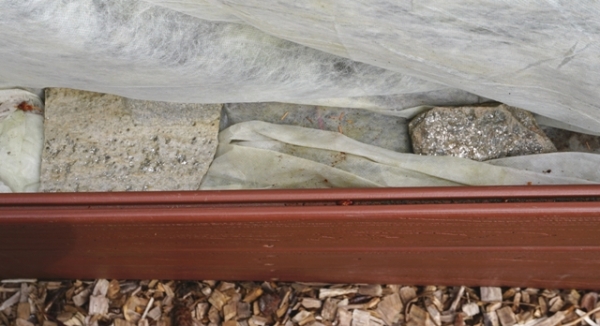
Flat, narrow pieces of flagstone work well to weigh down edges of fabric.
The fabric needs to be secured to the hoops, as well. There are curved plastic clips (snap clamps) made especially for this purpose that attach well onto straight sections of the pipe (less on curves). You can make your own out of short sections of pvc, or use very large metal clips used for securing paper. A square of nylon or heavy plastic between the clip and the row cover prevents tearing so the fabric lasts longer. Most of the time, I get about a year, sometimes more out of the row cover before it is torn and degraded by the elements.
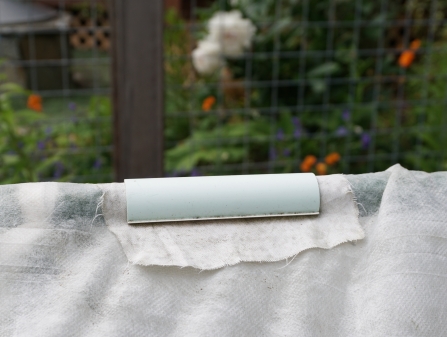
Snap clamp secures fabric to cross bar with nylon underneath to prevent rips.
Some of my crops are covered all year round, from the time I plant seed to the final harvest: carrots to prevent carrot rust fly, radishes to exclude flea beetles and cabbage maggot, any crucifer (kale, cabbage, broccoli, etc) to prevent imported cabbage moth caterpillars. These are much harder to control once they become established (especially soil borne insects). One ounce of prevention is worth a pound of cure, especially when I’m trying to grow healthy, clean food.
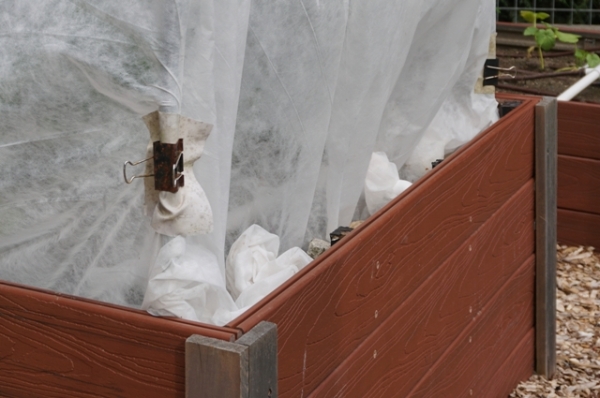
Big clamps work great to secure fabric to curved sections of hoops. Fabric weighted down all around.
For other crops, I use it just to protect the seed until it germinates and gets strong enough to endure pests or the elements. With beans, corn, peas, it keeps birds from eating the seed before they even have a chance. Or with eggplant, to provide it a little extra warmth until summer kicks in. Then I remove the cover so they can get as much sun as possible. With lettuces it might be the opposite–cover to protect from intense sun, extending its harvest window.
Row cover comes in different thicknesses that allow for more or less light to get in, and come in different lengths and widths, pre-cut and rolls. There are many options depending on why you’re using it and for what crops.
Besides on frames, I’ve loosely blanketed a raised bed with the cover, lightly weighed down on the edges for short seedlings. It works well loosely tacked directly to the ground over rows of emerging corn seedlings; draped over a tomato cage that’s protecting a newly planted, delicate cucumber while our nights are still quite cool. I keep finding new uses for it and swear by it for successful vegetable gardening.
To learn more: How to use floating row cover WSU Publications
Benefits in this fact sheet from WSU Snohomish County Extension: Benefits of Row Cover WSU Snohomish County Extension
